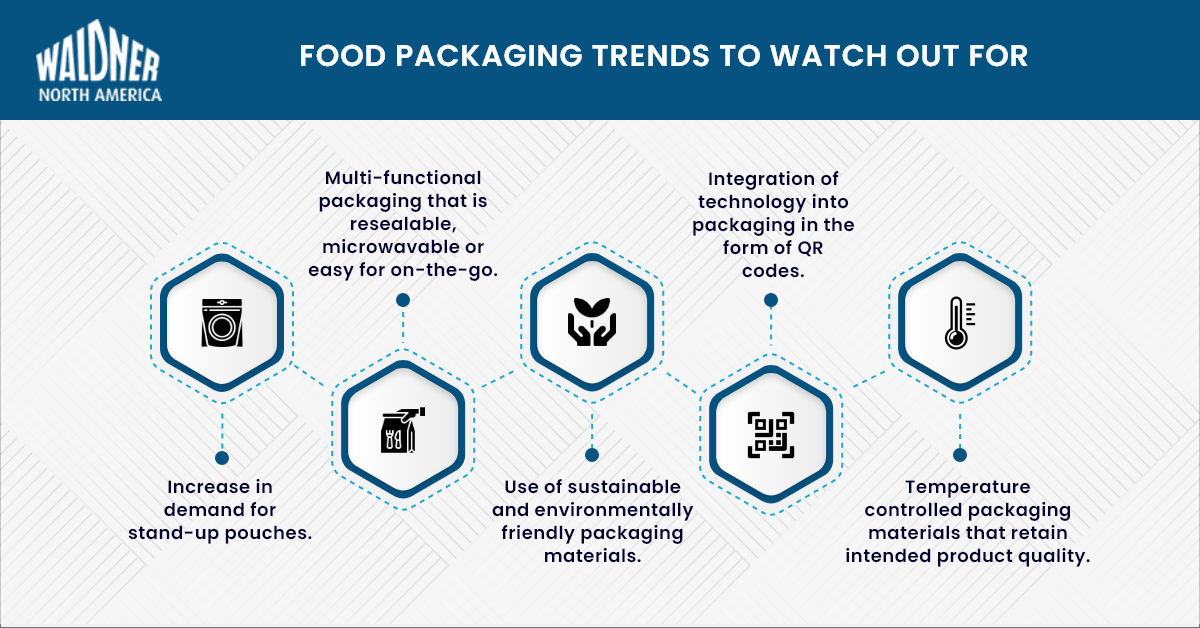Have you ever wondered what is common between freshly roasted coffee, delicious candies and crisp veggies? They are all packaged in pouches or bags that belong to a rapidly growing category called flexible packaging. Undoubtedly, flexible packaging is the most widely used packaging across industries world-wide. Common examples of flexible packaging include pouches, spouted pouches, retort packaging, single serve cups etcThe flexible packaging trend is here to stay as it has surpassed all other packaging types including rigid plastics, metal, paper and glass. Flexible packaging's high functionality extends the shelf life of food, minimizes material wastage and offers appealing design opportunities.
Present trends in flexible packaging are likely to shape the sector for years to come. Customer demands, government and legal standards and technological innovations will define how goods are packaged in the future.
Here is a quick rundown on current flexible packaging trends.
Increase in demand for stand up pouches
With stand up pouches being an ideal solution across a wide range of industries, they are among the fastest-growing segments of flexible packaging. Studies have shown that stand up pouches will witness 7-9% growth annually over the next few years. Convenience and customization opportunities are the major factors responsible for such an increase in demand. Additionally, pouches are durable, easy to transport and come with resealable zippers that help keep products fresh for a longer time. All these features make pouch packaging a win for consumers. And when consumers win, manufacturers win.
 Growing sustainability concerns
Growing sustainability concerns
As consumers are increasingly becoming environmentally conscious, the demand for sustainability from manufacturers is at an all-time high. Studies show that nearly 70% of consumers are willing to pay higher prices to support sustainability. Rigid-to-flexible conversion, with its huge sustainability benefits, has been a trend for some time now.
From fewer use of raw materials to reduced CO2 emission and energy consumption, flexible packaging offers a better solution than its rigid counterparts. Not just that, flexible packaging materials are recyclable and even biodegradable, which further reduces carbon footprint and in turn, delights eco-conscious consumers. For example, 1 truckload of unfilled flexible pouches accounts for 26 truckloads of unfilled glass jars. Switching to flexible packaging can drastically reduce packaging material cost, transportation cost, and CO2 emission.
E-Commerce
From short delivery expectations to complicated return policies, e-commerce companies encounter several complications. Flexible packaging can provide e-commerce companies a much needed edge in areas such as sustainability, branding, and shipping costs. In addition, multi-layered films used in flexible packaging offer a great deal of product protection against sunlight and moisture in storage and transit.
Flexible packaging solutions from Waldner North America
Waldner North America specializes in automated filling and sealing packaging equipment such as pouch filling machine and spouted pouch filling machine for shelf stable food products in cups, trays, pouches and spouted pouches. Our core food product applications include fresh and cultured dairy products, baby food, pet food & treats, prepared foods and ready meals. Waldner DOSOMAT systems are available in both rotary and inline configurations, with capacities ranging from lower outputs up to high performance, high output solutions. Our team brings creative package designs to market supporting brand differentiation and making new packaging innovations a reality.